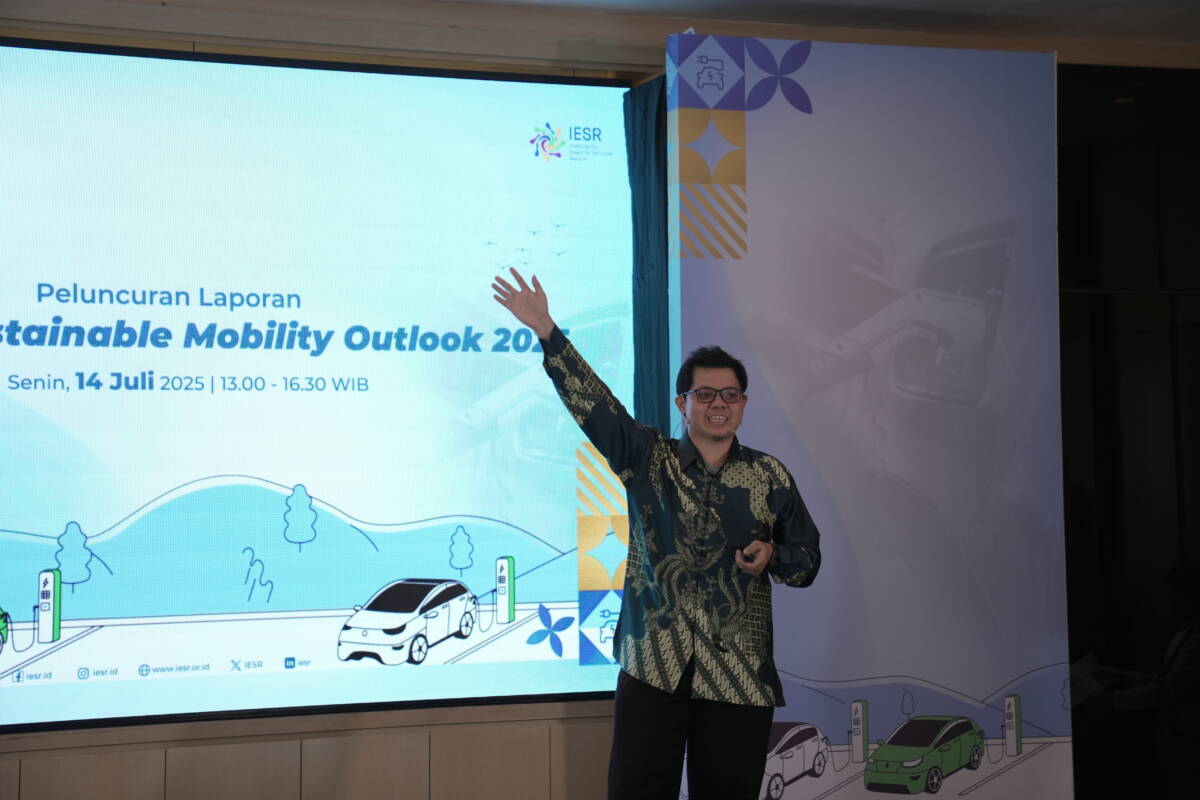Jakarta, July 14, 2025 – Human mobility is a consequence of a constantly evolving and growing economy. To meet the needs of each individual, various alternative land transportation modes are developing, especially in large cities like Jakarta and its agglomeration areas.
The transportation sector in Indonesia consumes 40% of the nation’s fuel. Road and land transportation dominate energy consumption in the transportation sector. Road transportation contributes 80% of transportation sector emissions, which continue to increase by 1.56% annually, reaching 202 million tons of CO2 in 2024.
Fabby Tumiwa, Chief Executive Officer (CEO), Institute for Essential Services Reform (IESR), stated at the launch of the Indonesia Sustainable Mobility Outlook (ISMO) 2025 report that decarbonizing road transportation requires a structured and systematic effort, requiring significant innovation in policy, technology, and business models to implement smart electrification.
“This report concludes that by consistently and simultaneously implementing the Avoid – Shift – Improve (ASI) approach, we can reduce emissions by 76 percent by 2060,” said Fabby. It should be noted that approximately 24% of CO₂ emissions are projected to remain as residual emissions. Most of this comes from the freight transportation sector—particularly heavy vehicles—which has not been the focus of specific interventions in the ISMO 2025 study.
Ilham R. F. Surya, Environmental Policy Analyst at IESR, stated that the public transportation situation, case studies in three major cities (Bandung, Jakarta, and Yogyakarta), show that public transportation faces various challenges in terms of reliability and consistency of service.
“With public transportation still not fully reliable, people tend to choose motorcycles for their commute. It’s no wonder that 70% of Indonesians use motorcycles,” Ilham said.
The dominance of motorcycles also contributes significantly to air pollution, especially because emissions of pollutants such as NOx, CO, and HC from motorcycles are recorded as being higher than those from other modes of transportation—NOx emissions can even be up to 20 times higher. Ilham added that if people continue to rely on private vehicles for mobility, at least three things will happen: increased GHG emissions, increased private vehicle ownership, and increased fuel consumption.
Rahmi Puspita Sari, Sustainable Mobility Analyst at IESR, explained the progress of decarbonization in Indonesia’s transportation sector. One example is the availability of adequate public transportation facilities that have successfully shifted the number of trips from private vehicles to public transportation. However, the cost of this transition remains quite high, as the government must build the main and supporting infrastructure for public transportation facilities.
“On the scale of personal shifts from conventional vehicles (ICE) to electric vehicles (EV), people still feel their willingness to purchase an electric vehicle is lower than their ability. Several factors still influence this low willingness to pay, such as unfamiliar brands, technological reliability, relatively long charging times, and the availability of government incentives,” Rahmi explained.
Faris Adnan Padhilah, Energy Demand Management Research Coordinator, said that the factors influencing transportation choices are highly personal, as Ilham explained.
“Therefore, regarding sustainable mobility, there is no ideal scheme that can be universally applicable to everyone. What exists is an ideal scheme for individuals, so the solution must be highly tailored, even to each individual,” said Faris.

